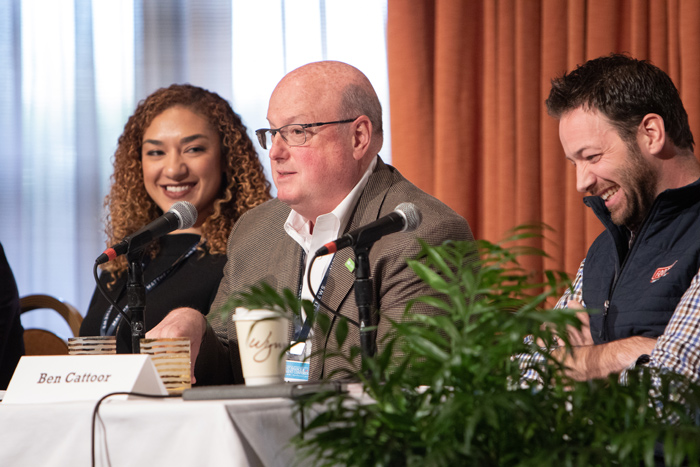A quickly evolving food on demand landscape means delivery services and restaurants alike are grappling with challenges of technology integration, consumer preferences and shifts in how people eat. While there are a seemingly dizzying number of elements to consider, the brands and companies that ultimately win will be those able to define, understand and appeal to their target customer—and avoid distraction along the way.
Offering delivery to capture every customer segment during every daypart is certainly appealing, at first. The lure of incremental sales is enticing restaurant operators to crowd their counters with ordering tablets and to overwhelm their kitchens at peak hours. A more effective strategy, however, is emerging, as what’s being termed “new age catering” becomes a larger part of restaurant operations in the delivery world.
“We’re not trying to solve the entire model, we’re trying to solve lunch delivery at corporate offices,” explained Ben Cattoor, who founded Foodsby as a way to deliver bulk lunch orders versus everyone in an office building ordering individually. “Everything is created to work with a restaurant’s operations.”
Restaurants select their delivery times, and Foodsby tells them how many orders they’ll have for the following day and where to deliver them. This, noted Cattoor, allows operators to plan for that catering volume and, by focusing on lunch orders that can be prepared earlier in the day, not negatively impact their dine-in business or flood the kitchen with orders during the dinner rush.
Caviar’s Anjarae Washington, head of Caviar For Teams and its new catering-focused acquisition Zesty, said it’s smart for restaurants to take advantage of opportunities for those planned orders, and with Zesty, “We do incentives for customers to order outside the lunch rush,” using special offers to encourage deliveries for 11 a.m. instead of noon, for example.
Washington also advised operators not to ignore other online ordering opportunities in addition to delivery.
“Pickup continues to be a good portion of the business and I don’t see that going away,” she said. Smart operators will “optimize for convenience” versus solely focusing on delivery.
At ezCater, that convenience comes in the form of giving restaurants access to sizable orders from corporate office managers, pharmaceutical reps and others responsible for providing food at large-format meetings. That specific target audience helps ezCater stay focused and gives restaurants another avenue for adding incremental sales and revenue, said Jim Rand, ezCater’s catering practice leader and former VP of catering for Panera. The company’s standard 15 percent commission rate provides for marketing and customer service support to restaurants, and ezCater tracks metrics such as order accuracy and delivery times to help restaurants improve execution.
“Restaurants that can execute on operations will do the best with delivery,” said Rand, who pointed out that the higher a restaurant’s ranking using those metrics, the higher up they’ll appear on ezCater’s website.
“You need to invest in this business like you would any other business,” continued Rand as he pointed out restaurants can’t expect to simply sign on with a delivery service without fully integrating delivery in operations. He recommended creating a catering coordinator role—someone who understands kitchen capacity and its constraints within overall restaurant operations.
“Put someone in charge, because if everyone is in charge, no one is in charge,” said Rand.
“All our customers really want is the right food, at the right time, at the right temperature,” agreed Washington, but achieving that takes focus.
Online ordering management software from Your Fare is one application helping restaurants streamline their delivery business. Because there are hundreds of local and regional delivery services out there in addition to the big names such as Grubhub and DoorDash, Your Fare founder and CEO, Chis Monk, tells his restaurant clients to first define their goals and create a coherent strategy around delivery before jumping in.
Your Fare’s tablet application allows restaurant staff to receive all their online orders to one device and its restaurant portal allows the managers to receive order history, customer information and accounting history. That’s valuable information, noted Monk, as he encouraged restaurant operators to push for more data sharing from the third-party delivery services themselves.
“Make more demands of the third parties to get transparency, because if you’re not providing the food, they don’t have a business,” said Monk.


